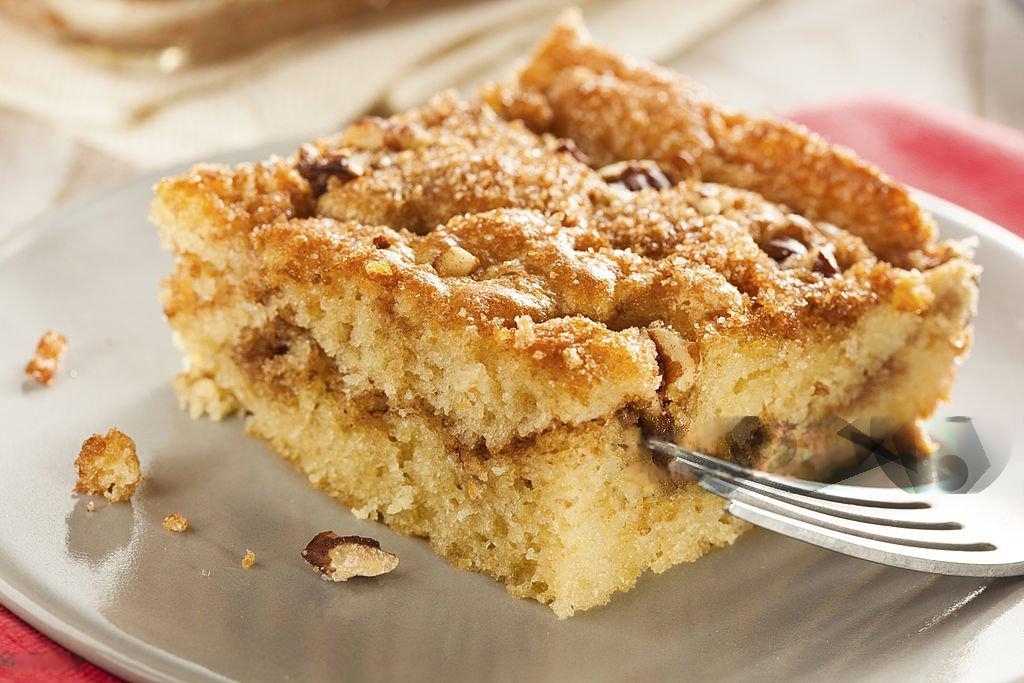To understand why coffee cake is called coffee cake I took my personal experience to answer this question. I have clear memories of that day. A ray of morning sun streamed through the window as I sat at my kitchen table, warming my breakfast. The highlight of the event was my grandmother’s recipe for it . It has always made me think of cozy mornings and fond memories. However, upon more reflection, the moniker appeared a little deceptive.
The morning coffee-making routine feels special; it’s a peaceful time before the day gets busy. For me, this moment is made even better with a slice of cake. It’s not just any cake; it’s a soft, crumbly treat with cinnamon that goes perfectly with hot coffee. I wanted to learn more about the history of this favorite dessert. I found a tale rich in history and tradition, but it still left me wondering, so I decided to explore further.
Origin
We should look back to where the cake began. This treat has its beginnings in Central and Northern Europe, especially in Germany, Denmark, and Sweden. In these places, it was common to have a piece of cake or pastry with coffee or tea, particularly during mid-morning or afternoon breaks called “kaffeeklatsch” in Germany and “fika” in Sweden.
The cakes enjoyed during these times were usually simple, not too sweet, and often included spices like cinnamon, nuts, and fruit. They were made to go well with coffee, not to take away from its taste. Eventually, these cakes were called “coffee cakes” because they were typically served with coffee, not because they had coffee in them.
When European immigrants came to America, they brought their coffee cake recipes with them, which started to change over time. American versions became varied, adding ingredients like streusel toppings, cream cheese, and chocolate chips. While they were still meant to be enjoyed with coffee, they became richer and sweeter, matching American dessert preferences.
A major change was the addition of the crumb topping, which is now a key feature of the American version of the cake. This topping, made from butter, flour, sugar, and cinnamon, gives a nice texture contrast to the soft cake underneath. Because of this topping, many people mistakenly view it as a dessert instead of its original purpose as a coffee side.

My Answer
What gave it, its name, then? Tradition and history hold the key to the solution. It got its name from its purpose rather than from its components. This cake was designed to be eaten with coffee, a warming beverage that has been a staple of our daily existence for ages.
Upon concluding my investigation and savoring a second piece of it, my gratitude for this modest confection increased. It’s more than just a cake; it represents kinship, customs, and the small joys in life. Enjoyed alone as part of a morning routine or shared with the company during a mid-morning break.
And as I sit here now, writing this with a slice of it beside me and a cup of coffee in hand, I can’t help but smile. Now, I know that every time I take a bite, I’m not just enjoying a delicious treat—I’m taking part in a tradition that spans generations and continents. And that’s something worth savoring.
My Personal Experience
As a kid, I would wake up to the aroma of coffee brewing and see a freshly baked coffee cake cooling on the counter. The cake was always soft, topped with a crumb mixture she made by hand, mixing butter, sugar, and cinnamon just right. She would serve it warm, with a cup of coffee for herself and a glass of milk for me.
For my grandmother, it was more than just a dessert; it was a way to unite the family. On weekends, she would invite neighbors over for coffee and cake, and they would gather around the table, talking and laughing for hours.
My grandmother and the history of coffee cake served as inspiration for me as I created my recipe, which I believe combines classic flavors with a dash of contemporary. Although it’s a straightforward recipe, I find great meaning in it. I begin with a simple cake recipe, which I moisten with sour cream. I swirl some cinnamon sugar in the center to give it trad. Naturally, I also add a thick layer of crumb topping on top of it since a coffee cake wouldn’t be complete without it.









